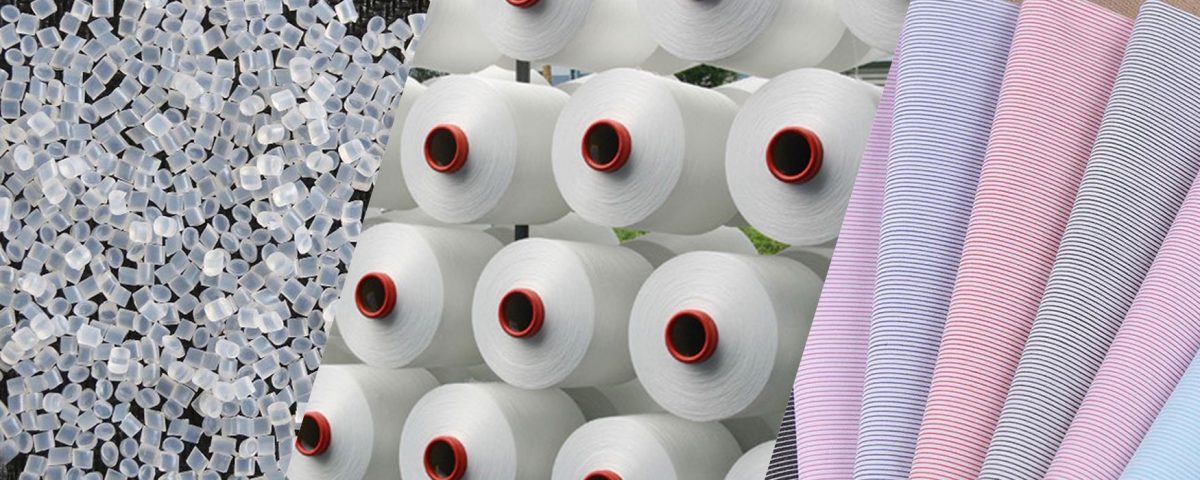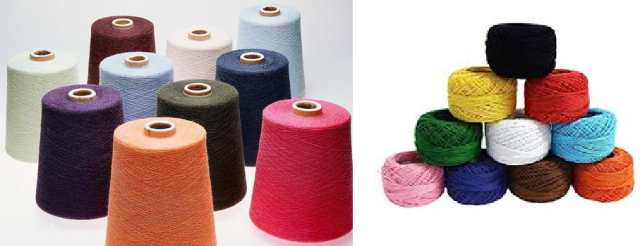ERP at Yarn Manufacturing & Processing

ERP at Chemical Industry India
November 15, 2022
ERP at Textile Processing (Dyeing & Printing)- Surat
November 19, 2022The Yarn Manufacturing Industry is Growing Rapidly due to the Invention and Installment of High-End Technologies .
Yarn consists of several strands of material twisted together. Each strand is, in turn, made of fibers, all shorter than the piece of yarn that they form. These short fibers are spun into longer filaments to make the yarn. Yarn manufacturing is a sequence of processes that convert raw cotton fibres into yarn suitable for use in various end-products. A number of processes are required to obtain the clean, strong, uniform yarns required in modern textile markets. Beginning with a dense package of tangled fibres (cotton bale) containing varying amounts of non-lint materials and unusable fibre (foreign matter, plant trash, motes and so on), continuous operations of opening, blending, mixing, cleaning, carding, drawing, roving and spinning are performed to transform the cotton fibres into yarn. Yarn manufacturing produces yarns for various woven or knitted end-products (e.g., apparel or industrial fabrics) and for sewing thread and cordage. Yarns are produced with different diameters and different weights per unit length. While the basic yarn manufacturing process has remained unchanged for a number of years, processing speeds, control technology and package sizes have increased. Yarn properties and processing efficiency are related to the properties of the cotton fibres processed.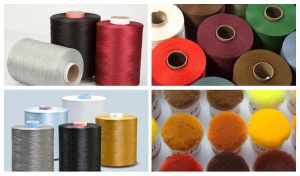
India’s Polyester yarn market revenue to grow 20 per cent this fiscal
Yarn Manufacturing Processes
Texturing provides a yarn with textile characteristics by restructuring the smooth surface to a more voluminous and handy one. Textured yarn has thus improved softness, bulk and covering capacity, enhanced heat retention and an elasticity matched to its ultimate application. One of the most important advantages of textured yarn is that it gives good comfort as the result of the air entrapped between the interstices of the yarn. It also provides better pill resistance, dimensional resistance and improved crease resistance. They have fuller and better appearance. Comes with easy to wash and dry characteristics with better shape retention ability. Warping process increase yarn quality, wound up fixed length of yarn on weavers beam & Increase the weavability of yarn. Warping is the second stage of the processes . The process involves transferring yarn from a predetermined number of tubes, cones or cheeses positioned on the creel onto a warper’s beam or a weaver’s beam. woven fabric is made by two sets of yarn: warp and weft. Warp yarns run with along the length of fabric and weft yarns go across the width of the fabric. Warping is the preparation of yarn to weave fabric. It is the transfer of many yarns from the creel of single packages to a beam. The yarns will form a parallel sheet of yarn wound onto the beam. The basic objective of warping is to built a package where yarn ends remain in uniformly set parallel & continuous form & there by to accelerate the next process either sizing or drawing-in.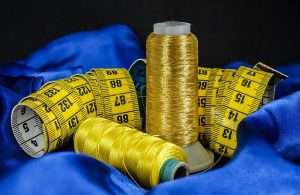
TEXTURING
Thermoplastic yarns, like Polyamides and Polyester, are especially suitable for texturing.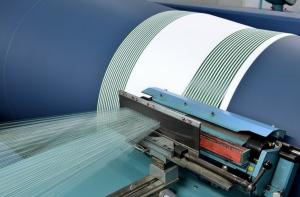
WARPING
Due to the interlacement of warp and weft yarns, a certain amount of waviness is imparted to the warp and weft yarns in a fabric. This waviness is called crimping. Warp and Weft crimp percentages are two factors that have an influence on the following fabric properties: Resistance to Abrasion Shrinkage Fabric Behavior during Strength Testing Faults in Fabric Fabric Design Fabric Costing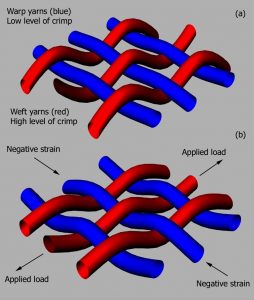
CRIMPING
Influence of Crimp on Fabric Properties:
PARTIALLY ORIENTED YARN (POY) is incompletely stretched filaments with an orientation degree between unoriented filaments and drawn filaments obtained by high-speed spinning. Compared with undrawn yarn, it has a certain degree of orientation and good stability, but cannot be used for textile processing. POY can be stretched longer, because POY is a pre-oriented yarn; it is not fully stretched, and the remaining elongation must be above 80%. POY is generally used to make textured yarn that can be also used in warping for weaving and warp knitting of fabrics. POY is stable for short durations and can be stored for only 6-8 months.Due to the very high amorphous and low crystallinity region, POY has very high shrinkage, which ranges from 50-70%.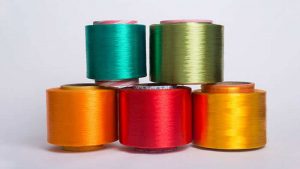
POY MANUFACTURING
It is preferred due to softer feel , better drape, higher recovery, wrinkle resistant, long lasting prints and colours.
Latest Trends in Sustainable Yarn Manufacturing
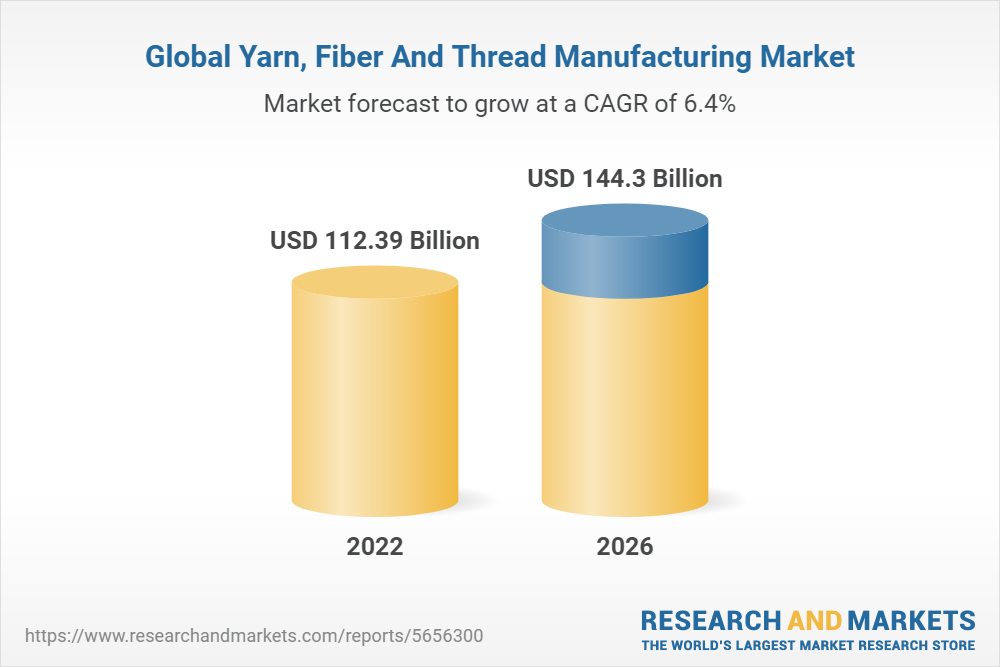
According to a new report from Grand View Research, the global yarn market is projected to reach approximately $1.2 trillion by 2025 at a compound annual growth rate of 4.24 percent. As the global textile industry continues to grow, it is generating greater demand for raw materials, novel applications and new production processes
The fiber and yarn sector is an integral part of the textile and garment industries.
Healthy demand from end user industries, and increased blending with cotton yarn due to decadal high prices of cotton, will drive revenue growth of 18-20 per cent this fiscal for polyester yarn manufacturing sector, according to capital market company CRISIL.
Textile Yarn Market size is forecast to reach $12.2 billion by 2025, after growing at a CAGR of 4.1% during 2020-2025. Product types such as silk, hemp, and viscose have been in demand owing to the demand for high value fabrics and due to a shift in consumer preference to more comfortable/affordable clothing. The market demand for blended varieties has also experienced higher than average growth, as they combine the useful characteristics of natural and artificial yarn. Hence, textile yarn will be viewed as a business opportunity in the forecast period.
The Process house ERP handles the following processes: Marketing, Sales Forecast, Planning, Merchandising, Weaving, Processing, Raw Material Procurement, Finished Goods Production, Logistics, Finance, Secondary Sales & Waste disposal. The yarn manufacturing industry without an ERP software will oversee all the above processes manually with no electronic record for future reference – this may result in manual errors, less organized workflow, increase in operational cost, lack of communication between employees and delay in delivery. ERP software is specially designed for yarn manufacturing industry that handles different types of raw materials such as fabric both grey & finished, cotton, yarn and Madeups. This software can be customized according to your businesses; it can store the records of all raw materials or resources used in the industry and streamline the operations by coordinating with the users. The ERP software maintains numerous records that are needed for performing the operations; it can be used in various levels from HR, finance, accounting, distribution, payroll, custom, customer relationship and more. To reduce the wastage of inventory and to improve the turn around time – the manufactures should adopt the Hard’n Soft ERP Software which will provide the optimized business operations and improve the employee performance.
Advantages of owning a Process house ERP software
Why Choose HNS ERP Software ?

Benefits of ERP for the Yarn manufacturing industry :
Platform Options to base your ERP solution
World’s Best Open Source ERP
The ERP For Small & Medium Enterprises
Complete Suite for your Business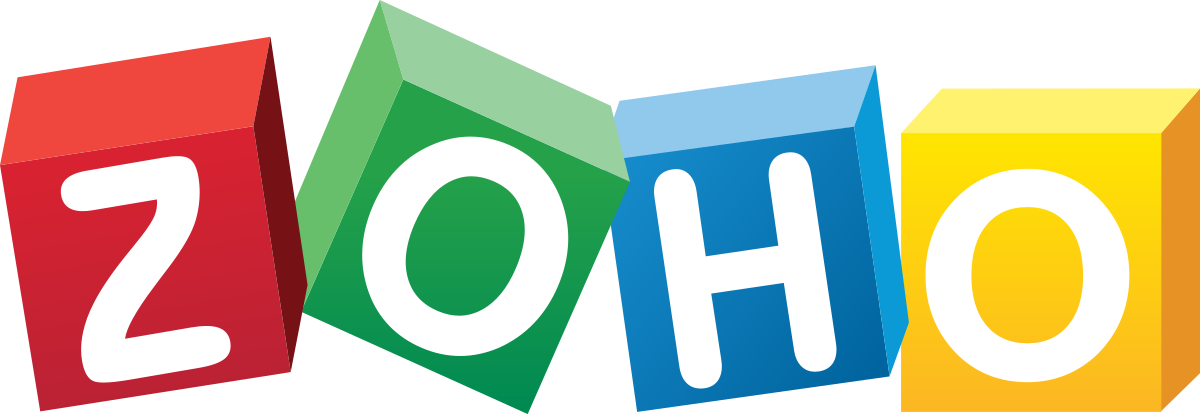
The Customized ERP
A few of our esteemed clients from the Yarn Manufacturing Industry

Radiant Holographics
Sachin – Surat
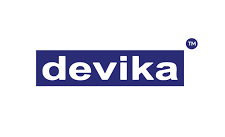
Devika Fibres
Surat

Radiant Color Yarn
Sachin – surat
What our clients have to say about us and our services
What Clients have to say about our Founder & CEO Mr Sailesh Khawani

